| On the second day we were able to visit some of the
workshops we had missed the day before. We spent a long time at the spinning
and weaving. This was interesting for both of us. I look at the engineering
and Jan is fascinated by the materials. | 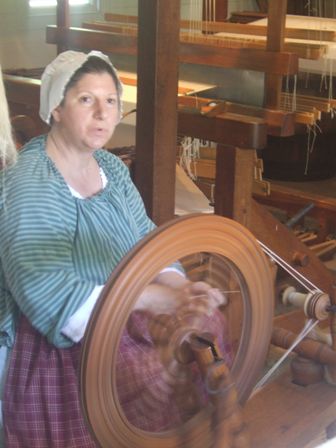 |
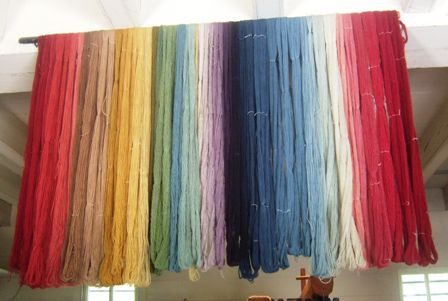 |
They dye their threads in a variety of colours still using the same dyes
that were used in the 1770s. These are mainly vegetable dyes, but cochineal
is still used as it was then to make the brilliant pinks - and research has
shown that brilliant colours were very much in favour then among those who
could afford them, men as well as women. |
| The looms were built in the colonies because England
would not allow the export of technology, but they were beautifully built. | 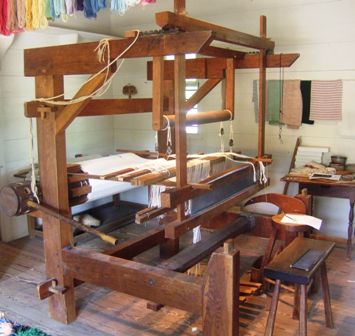 |
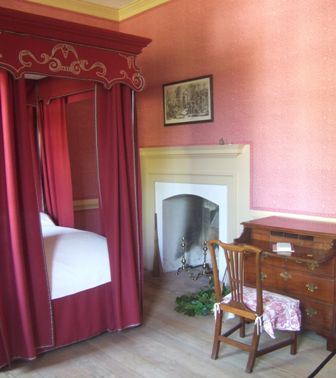 |
One of the other big houses was Randolph House and we took another tour. The
bedrooms were less opulent than in the governor's mansion but were still
well decorated and furnished. |
| There was a musician playing dance music of the period
which was very familiar to us as being from the Playford sets. He was also
very interested in the Scottish tunes and we spent some time talking to him
as we discussed the correct pronunciation of some of the names of the tunes. | 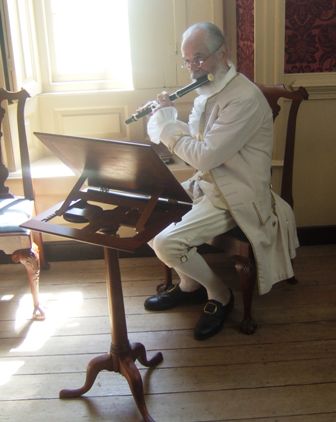 |
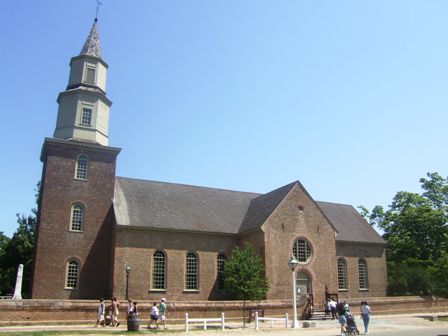 |
The church is the parish church of Bruton (wherein 'there lived a maid'). It
is still a parish church today but probably with fewer parishioners. It was
formed from the merging in 1674 of two earlier parishes and was named after
the ancestral home in Somerset of the then governor (Sir William Berkeley).
The rectors of the parish were often also the presidents of William and Mary
College in Williamsburg, one of the earliest colleges in the US. It was the
Rev W A R Goodwin (1903-9) who started the process of restoration of the
church and later the town itself. The church was designed by Governor
Spotiswood and this building (the third on the site) was built in 1715. It
has been extended and restored several times since. |
| Printing was a very important way of getting messages
about and there were both a printer and a bookbinder in the town. Few people
could afford bound books but political pamphlets abounded. The printing
presses were still somewhat primitive. The bookbinding was of quality
rarely replicated in today's world of mass production. | 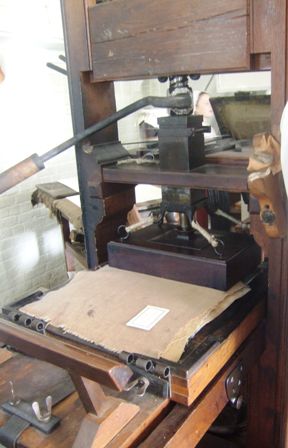 |
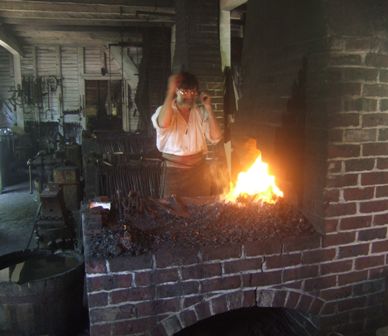 |
Crucially important was the blacksmith's shop. Although today only one forge
and a couple of smiths are at work, this shop would have supported up to 20
workmen and there would have been several smiths in the town, but this was
James Anderson's. The smiths would have repaired items and made new ones
many of which would have been sold at the adjacent William Prentis store.
William was born in London and went to school at Christ's Hospital for six
years before being apprenticed at age 15 to a Dr Blair who owned the store
in Williamsburg. William Prentis was the richest merchant in Virginia when
he died in 1765. The store ceased operation in 1779. |
| The colonial wigmaker provided new wigs, or perukes,
and cleaned and styled or restyled existing ones for the gentry and many
successful businessmen of Williamsburg. Wigs and hairpieces were available
in horse, goat, yak, or human hair. The wigmaker's skill allowed him or her
to weave hair and fashion it into the latest coiffures from London - a rare
skill these days. | 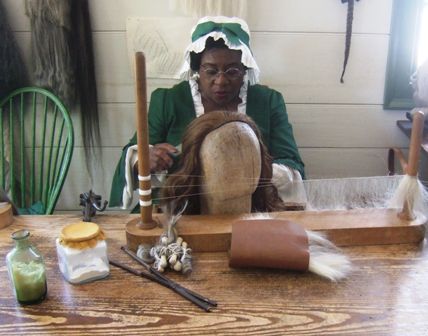 |
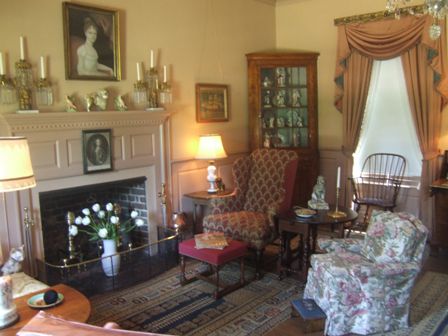 |
We had visited Bassett hall, the home of the Rockefellers. The rooms
actually seem very ordinary but then this was a private home for them rather
than one for lavish entertaining. |
| The decor is very 1930s and not at all to my taste.
There is a lot of artwork. It was interesting to note that their tastes did
not necessarily coincide. There were definite 'his and her' rooms. | 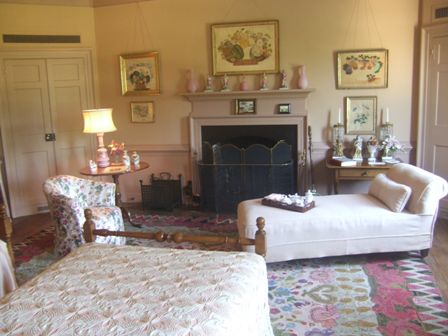 |
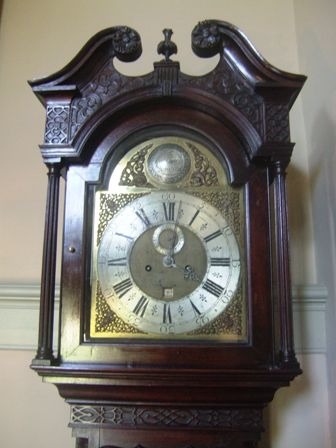 | There is an impressive grandfather
clock halfway up the stairs. There are several such clocks in major
buildings in Williamsburg. At least one was made in 1745 by William Claggett
of Rhode Island. The origin of this clock is unknown. |
| After
the Rockefellers died the house continued to be used by members of their
family, and they wanted modern appliances. However the house was eventually
given to the foundation, complete with its furnishings and artwork, and it
was decided to return the kitchen to the period of the 1930s. Some visitors
were old enough to remember their parents or grandparents still having
kitchens that looked like this. | 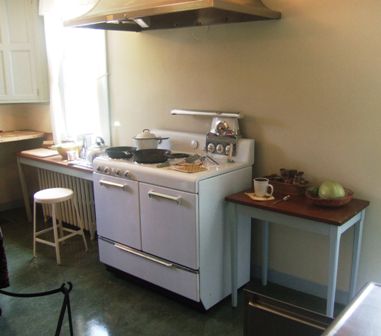 |
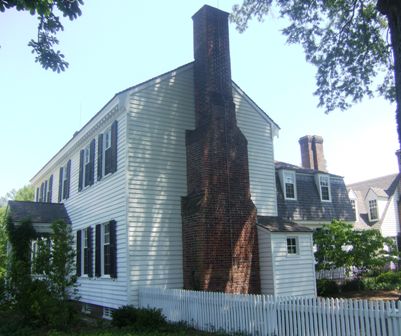 |
The plot of land is over 585 acres but Bassett Hall itself is not huge (only
seven bedrooms). This is a view of the right hand side. Back in the grounds
there used to be a huge old oak which was there in Rockefellers' time. But
it finally fell in a storm in the 1990s. |
| It is amazing what you come across as you wander
round. Here one of the docents is busy shearing a sheep. Apparently they
shear one each day in the season. It is of course sheared by hand and your
average Aussie would make rather less work of it. | 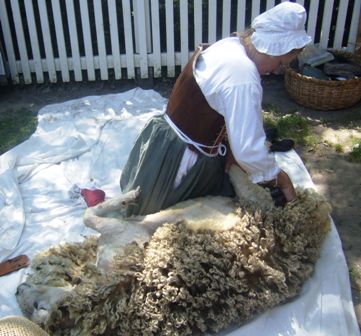 |
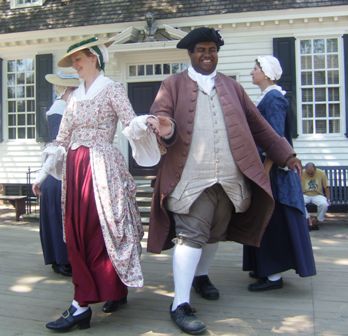 |
Another event we picked up on was a dance event with audience participation.
We did, of course, participate but it was rather simple. Later in the day we
caught the group giving a short display. Very reminiscent of the days we
gave similar displays of similar dances with equally mismatched
participants. |
| Bricks were used for foundations, chimneys and to face
the more important buildings and they would have had to make all their own
bricks. As expected we found the brickworks and were treated to a display of
brick making. We declined the invite to assist by treading the clay. Bricks
would have been made all year and dried and then fired all at one time. This
is a stack of fired bricks still inside the dismantled kiln, waiting to be
removed to storage before being used in renovation projects on site. | 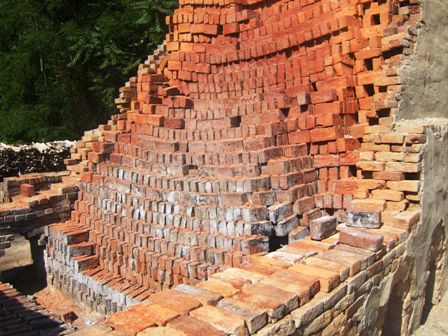 |
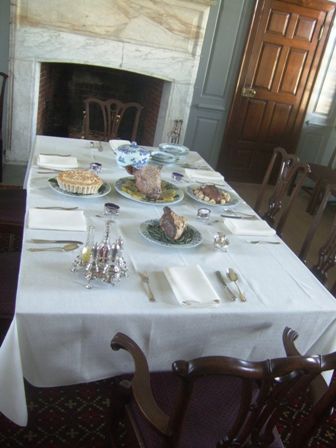 |
And as the day drew to a close we peered into another kitchen for yet
another family meal, this one rather less substantial than that at the
governor's residence but still quite substantial. |
| The windmill was unfortunately closed for renovation
so we were unable to look at milling mechanisms. | 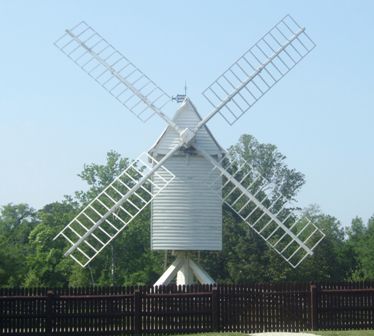 |
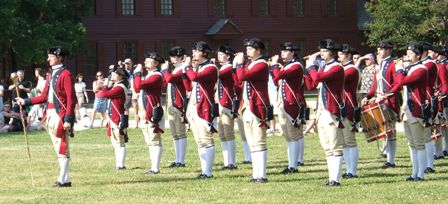 |
I think the local college must make up the marching pipe and drum band which
performs the evening display. They look very smart and very young and are at
least 50% female. |
| Not so the musketeers who load and fire to the command
beat of the drum. | 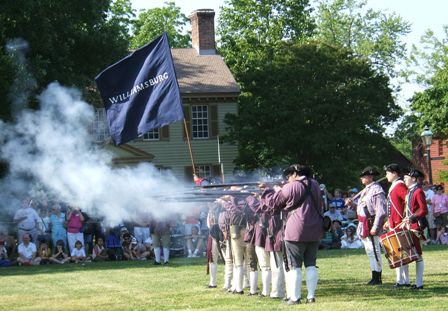 |
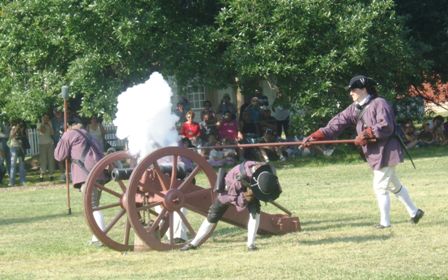 |
And to round it all off they fire the cannon, which is deafening.
We took the bus back to the campsite ready to move on in the morning. |
|